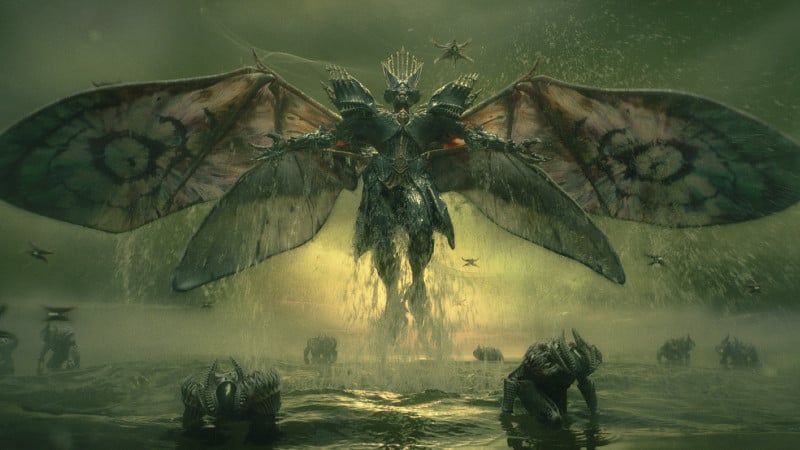Destiny enthusiasts have had to wait a long time for this latest expansion, and Bungie rewarded that patience with an outstanding installment. The Witch Queen is one of the studio’s most demanding releases, both in terms of storytelling and gameplay system, and this complexity is particularly rewarding for longtime players. The same depth across the expansion’s width also means it can be difficult for newer or retired players to climb aboard. For those who want to take full advantage of what’s on offer, the Witch Queen has tons of tricks and treats.
Destiny 2’s story has been building on this conflict for some time, and I’m amazed at how the narrative investment is paying off with so many of the pieces fitting together. Savathûn is a wily and intriguing villain, and it’s great fun to see her plans finally come to light. But The Witch Queen’s more impressive narrative accomplishment is the nuance with which she now treats her characters and storylines. Previous implications of the universe’s simple light-dark duality are systematically overridden with twists rooted in character motivations and moral dilemmas.
The campaign missions in particular are particularly strong this time. This excellence is thanks to some impressive environments and several cleverly designed battles, but it’s also enhanced by the new Legendary playthrough option. This way, the missions last longer and require strategic reloads and careful approaches, but with correspondingly better rewards to make it worthwhile. I also like the new Light-wielding Hive enemies and the way they mix up the fight. As a high-challenge approach to enemy types, it feels more engaging than the champion system we’ve seen in recent iterations, and also has more fictional roots.
Whether I’m fighting this new spirit-wielding horde or more familiar foes, I particularly appreciate the balancing work that has gone into Legendary Missions to make them challenging and interesting, whether played solo or as a fireteam . The entire campaign experience is framed as a mysterious story unfolding in a psychic mindscape of memories and hidden truths, and this narrative framework ties into the post-campaign storytelling in a satisfying way.
The new Throne World destination is one of the most visually compelling series, defined by two extremes. To one side is the towering edifice of Savathûn’s sprawling palace grounds – a testament to their power and mothlike beauty. That aesthetic gives way to a miasmic otherworldly swamp that feels dirty and overgrown. There are secrets to be discovered and impressive sights to be seen at both ends.
Weapon crafting is a particularly welcome new diversion, offering Wardens the opportunity to craft many of the latest weapons into exactly the form they want. This takes a long time and encourages a mini-leveling experience for each weapon of choice in addition to character progression. The options to tweak and set a preferred loadout are great fun, but it’s also a system that dramatically exacerbates the game’s already potent currency bloat problem. The process requires so many items that even as a long-time player, I’ll throw my hands up and just randomly get new resources in hopes that I’ll eventually gather what I need. I was also frustrated with some of the weapons I can’t craft with the system; Some of my favorite new additions to the arsenal just don’t have crafting support.
At the heart of the new weapon build options is the arrival of the Glaven weapon archetype; The hybrid weapon is enormously entertaining. I got a kick from his ranged single-shot blasts, blocked with a shield, and then swooped in for a high-risk melee. The weapon type does what a new archetype should do; feel like something new that fills a niche and a need I didn’t know I had.
Build crafting potential from weapon crafting is further enhanced with the overhaul of the Void subclasses. Now structured in the same way as the recently introduced Stasis powers, the new approach to Void is incredibly flexible and powerful. Smart perk and power applications can transform a character’s abilities. At this point my biggest problem is that now Stasis and Void are the only ways I want to play; The promised Arc and Solar overhauls can’t come soon enough as they now feel lackluster in comparison.
A number of special weapons missions, new multiplayer attacks and exploration quests have been added alongside the campaign, especially if you opt for the season pass. In general, from the new PsiOps to the recently unlocked story missions, the focus is consistent with what we’ve seen in last year’s content – lots of enemies, big playfields, and plenty of opportunity for large-scale destruction. I particularly enjoy the push-and-pull dynamics of the new Wellspring activity as each day oscillates between attacking and defending variants. As with the currency and resource issue, my biggest problem with recent activity is that the language has become particularly opaque. “Risen Umbral Energy is found by using Psychoogenic Intel to decode the Runic Chest awarded after PsiOps Battlegrounds” is a mouthful even for lore devotees.
At the top of all this high-level activity is an exciting new raid. Vow of the Disciple delves deep into one of the mysterious Pyramid Ships and is one of the most unusual settings yet, filled with relics of arcane experimentation and forgotten cultures. The reliance on visual icons and symbols goes far beyond what players had to master before – it’s the equivalent of learning an entirely new alphabet of runes – and the encounters have a real sense of accomplishment as you learn the vocabulary. I appreciate the technical complexity of the encounters, but sometimes long for a little less local slang and constant shouting.
The Witch Queen is a particularly robust expansion with a strong focus on customizing the game experience and rewarding long-time players’ investment in story and systems. If it’s not the most inviting moment for players to jump in, it may be a price Bungie’s developers are willing to pay at this point. The long-running story arc that opened in 2014 is gradually reaching a climax, and it’s possible that the developers are becoming increasingly interested in building a ride for those who’ve been in the vehicle for a while.








